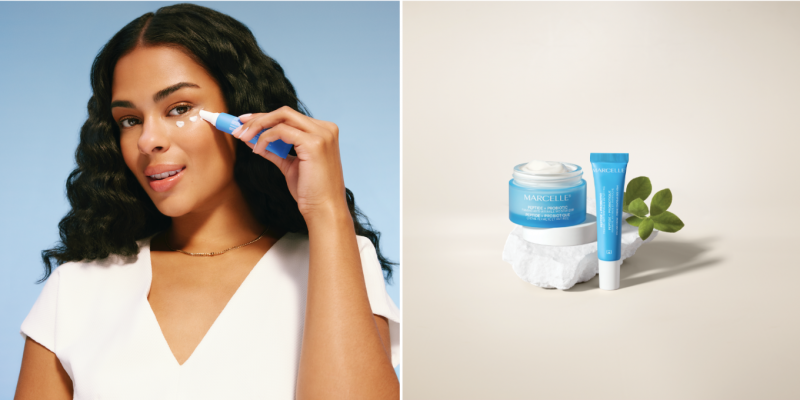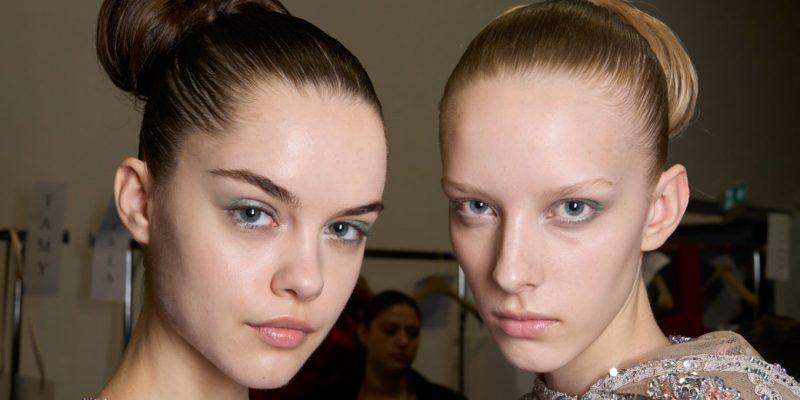Beauty
Face odyssey
Cosmetic dermatology is advancing at lightening speed. ELLE reports on the latest developments.
by : Christy Wright- Feb 2nd, 2007

1. Portrait
Who it’s for: Anyone with deep wrinkles, saggy skin, sun damage and scars (such as acne scars).
What’s involved: A topical anaesthetic is applied to the face and a non-invasive probe that emits nitrogen gas is passed over the skin without touching it; this stimulates the natural growth factors for generating new skin in both upper and lower dermal layers.
Duration: Two hours.
Recovery time: Five to seven days.
Pros: Only one treatment is needed; skin continues to improve over time, looking plumper, tighter and more toned; results can last anywhere from three to five years.
Cons: Patients walk out with redness, which turns into a sunburn or tan within one or two days; it may cause skin to itch, so patients should see their doctor every day for five days following treatment for an application of a special anti-itch cream and SPF moisturizer.
Expense: From $1,500 to $3,000 per session, depending on the grade of treatment and degree of wrinkling.
Website: www.rhytec.com.
2. Sculptra
Who it’s for: Anyone with loose skin, deep wrinkles and hollow under-eye circles.
What’s involved: This new injectable polymer filler replaces lost volume by stimulating collagen production. A numbing cream is applied and left on for 10 minutes. Areas to be injected are mapped out with an eyebrow pencil.
Duration: 45 minutes.
Recovery time: No downtime, but injections may cause swelling that subsides within one to 15 days.
Pros: Little or no pain; no downtime; once injected, Sculptra is absorbed by the body in approximately three months, but the natural-looking results can last for up to two years.
Cons: Possible swelling and bruising.
Expense: Three or four treatments, spaced four to six weeks apart, may be required, depending on the patient’s age and skin condition. Sessions start at $3,500 for a 35-year-old, $4,500 for a 45-year-old and so on.
Website: www.sanofi-aventis.com.
3. Wire line eraser
Who it’s for: Anyone with deep smile lines (especially around the nose and mouth), forehead lines and vertical lip lines.
What’s involved: Performed under local anaesthetic, a wire, similar h to a cheese wire, is placed under the skin with needles. (Incisions are not necessary.) Lines or wrinkles are released from underlying muscle, and fat from the patient’s thighs or stomach — or a filler like Restylane — is inserted into the space.
Duration: 10 to 30 minutes.
Recovery time: 10 days for bruising to heal and swelling to subside.
Pros: Results can last up to four years, depending on how the patient heals and ages.
Cons: Swelling and bruising.
Expense: Starts at $750.
Website: www.drborn.ca.
4. Accent
Who it’s for: Anyone who wants to have tighter facial skin or less cellulite.
What’s involved: This radio-frequency device penetrates deeper than Thermage using two types of radio-frequency technology: bipolar and unipolar. Bipolar penetrates between two and six millimetres to promote tighter skin through collagen shrinkage and remodelling; unipolar penetrates two centimetres or more for cellulite and fat reduction. The treatment area is cleansed and lubricated with baby oil, then the Accent hand piece is passed over the skin in a light rubbing motion to allow radio-frequency energy to penetrate the skin.
Duration: Facial treatments take 30 to 40 minutes. Two treatments, spaced one or two months apart, are required to boost collagen production. Cellulite treatment times vary, depending on the size of the surface area.
Recovery time: No downtime.
Pros: Non-invasive; painless (no numbing required); suitable for all skin types.
Cons: Patients may feel their skin tightening after treatment. (This subsides within one or two days.)
Expense: Treatments for the face range from $500 to $2,000; treatments for the body range from $200 to $250 per area.
Website: www.almalasers.com.5. Eyes by thermage
Who it’s for: This non-invasive alternative to a surgical eye lift is for those who want to tighten skin around the eyes, smooth crow’s feet and reduce under-eye bags. Previously, Thermage could not be used near the eyes because its radio-frequency energy penetrated too deeply and was damaging to delicate skin.
What’s involved: The ThermaCool system directs radio-frequency energy through a penlike tip designed to target the delicate skin around the eyes. This energy activates the body’s wound-healing response by heating the deepest layers of tissue and stimulating collagen production.
Duration: One hour.
Recovery time: No downtime.
Pros: Non-invasive; no bruising or swelling; results can last for up to two years, depending on the patient’s age and skin condition.
Cons: Possible redness, blisters and bumps and, in rare cases, some
surface irregularities.
Expense: About $1,800 in Canada and $2,800 in the United States.
Website: www.thermage-info.com.
6. Eyebrow transplant
Who it’s for: Anyone with little or no eyebrow hair due to excessive plucking, hereditary hair loss or physical trauma (such as burns, scarring or injury).
What’s involved: A surgeon removes a small strip of fine hair from the scalp (just above the ear), makes tiny needle pricks along a drawn-in brow and transplants individual hairs into the pinpricks.
Duration: Two or three hours.
Recovery time: No downtime; new eyebrow hairs start to grow on their own after two or three months.
Pros: Brows are natural and last a lifetime.
Cons: Possible mild pain in the brow area immediately following the procedure; mild swelling for two or three days; scabbing that can last up to a week; new hairs require trimming every three or four weeks.
Expense: $2,000 to $4,000 in Canada and $2,250 to $4,500 in the United States, depending on the amount of hair required.
Website: www.hairtransplantnetwork.com.
7. Transbleph brow lift
Who it’s for: Anyone with a mildly to moderately sagging brow line and droopy eyelids.
What’s involved: This bio-absorbable eyebrow clip allows doctors to perform a brow lift by making a small incision in the crease of the upper eyelid to expose the browbone. The clip is drilled into the browbone, and any excess skin on the upper lid and browbone is lifted and hooked onto the clip’s tiny barbs.
Duration: Eight minutes for each eye.
Recovery time: Less than a week.
Pros: In the past, brow lifts involved a large incision near the hairline along with a forehead lift, but with this procedure the incision is hidden in the fold of the upper lid; the body begins to absorb the clip immediately, which makes the incision impalpable within four or five months (and the skin won’t sag after the clip dissolves); results can last up to three years, depending on how the patient ages.
Cons: Invasive.
Expense: $2,500 to $4,000 for both brows.
Website: www.coaptsystems.com.
8. Refirme
Who it’s for: Anyone who wants to lift droopy skin around the brows, cheeks, jowls and neck.
What’s involved: A wand combining infrared light and bipolar radio-frequency energy in the same pulse is passed over the face, heating up connective tissue and stimulating collagen production for an instant tightening effect.
Duration: 30 minutes.
Recovery time: No downtime.
Pros: Quick and non-invasive; noticeably less painful than other tissue tighteners, such as Thermage; produces consistent results on all skin types (including black, white, Asian and even suntanned skin); instant elevation of the cheeks and tightening of the neck.
Cons: Not for women who are pregnant, too heavy or too thin or who wear pacemakers; patients may feel a mild pinching sensation; several treatments are required for best results.
Expense: From $1,500 to $2,500 for the treatment package, and from $250 to $500 for the maintenance treatments.
Website: www.syneron.com.
On the horizon . . .
Tissue transplant:
Like a page out of a science fiction novel, tissue banking is fast becoming the way of the future. This procedure uses a patient’s own DNA code to grow a new sheet of skin. The young tissue is implanted over the patient’s damaged skin to cover up signs of aging. The procedure is currently in clinical trials in Canada, but U.S. doctors are using tissue transplants to treat burn patients.
Lip implant:
If you’re saving up to buy a pair of “Angelinas,” take note: FulFil lip implants — the first truly soft, permanent lip implants — are now available in the United States. Designed to create plumper lips, the saline-filled implants are adjustable, long-lasting and removable.
Newsletter
Join our mailing list for the latest and biggest in fashion trends, beauty, culture and celebrity.
More from Beauty
Read Next

Fashion
Are Fashion Brands Getting Greener?
While the fashion industry is making a lot of noise about being more sustainable, a closer look shows that its earth-friendly commitments are often more illusion than reality.
by : Marouchka Franjulien- Apr 19th, 2024

Beauty
What Beauty Packaging Is Actually Sustainable?
We sought out leaders in the field to help us get to the bottom of the blue bin once and for all.
by : Victoria Christie- Apr 19th, 2024

Culture
This Maple Whipped Tofu Toast Is Unreal
Light, fluffy with a touch of zest, this maple syrup-infused toast is a slice of heaven.
by : Margaux Verdier- Apr 9th, 2024




